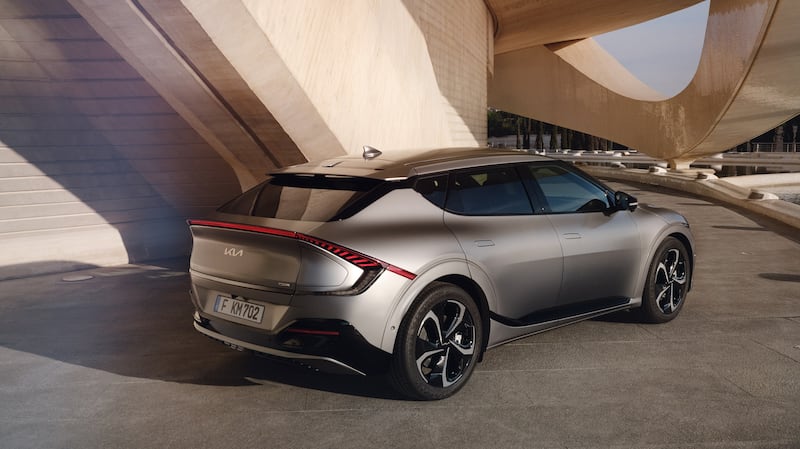When Eoin Cambay was growing up, he wasn’t sure what he wanted to do for a living.
“I was always changing my mind about whether I wanted to be an architect, or work in advertising, or do product design or be an engineer. It took me until I was midway through college to realise that the common theme underpinning all the things I ever wanted to do was to create something,” he says.
In the end, he created a technology business, Swan. It helps online shoppers buy clothes that really fit them, and that helps stores to reduce the volume – and cost – of returns.
It came about for two reasons. “At the beginning of college I was really into photography. I was also ordering a lot of clothes online. I just thought there has to be an easier way to ensure they would fit me properly. To me using a photo to do that seemed so obvious,” he explains.
He was studying business in Trinity College Dublin at the time and, in the summer before his final year, took part in Launchbox, TCD’s student accelerator programme.
"Launchbox made it feel like starting a business was a valid choice," he says.
He graduated with his degree in 2019 and began working with TCD's Adapt research centre, which specialises in artificial intelligence-driven digital content technology. It helped him to develop and commercialise the technology that underpins Swan.

Up until now online clothes shopping has been a hit-and-miss affair that results in an awful lot of waste – both financially and environmentally – as ill-fitting garments are shipped to customers only to be returned.
Swan, which is due to launch soon, resolves this issue.
“Initially the solution involved taking one photo of yourself, then two, for perspective. Then we realised that video is best,” Cambay says. Not alone is there much more information in a video but it provides a truer picture of you.
“When someone is getting their picture taken they put their shoulders back, breathe in and strike what is therefore a non-natural pose.”
With Swan, users simply prop their phone up against a wall, step back and let the app voice-guide them into position, while they raise their arms and turn. It then creates a digital model of them.
Because garment sizes vary from country to country, and from manufacturer to manufacturer, Swan only works off the actual measurements of each garment, figures it gets directly from each manufacturer. It can therefore recommend the precise size that will fit your body shape.

The current available options, such as small, medium or large, don’t take account of the fact that no one size really does fit all. “They don’t work because body fat distributions are so unpredictable,” he says.
What each of us wants to know when we worry about buying something online is not so much will it fit, as will it look good on me, he points out. Something tight or loose in the wrong places won’t.
For consumers the appeal is clear. For brands, it’s even more compelling. “We built it into the Shopify app so that brands can come on board really fast, and we went for small and medium brands first, because returns cost them much more than they cost large brands with huge, networked supply chains,” he says.
Fashion ecommerce is different to other kinds of ecommerce. The core question fashion consumers ask, how the item will look on them, is a complexity booksellers or cutlery makers don’t have to consider.
“With those, one size really does ‘fit’ all. But the same T-shirt will wear completely differently with each buyer. And on the internet, you have no idea will something fit you. It’s why people very often order multiple sizes, then send back the ones that don’t fit,” says Cambay.
“The financial Band-Aids the industry used to overcome that problem, to get people to buy online, was returns. But returns are inefficient and costly for brands. We wanted to make ecommerce personal for shoppers, and profitable for brands.”
The industry is also missing sales opportunities, he points out, in cases where people won’t buy at all because they’re unsure how an unfamiliar brand will fit them. Currently 73 per cent of fashion returns are attributable to size issues.

Swan users, once measured, receive a Swan ID, a simple code they can use when buying for themselves, and can share with friends and family, to help with gifting. “After the December splurge retailers always face a deluge of returns in January,” Cambay says.
Swan solves such problems once and for all. It reduces manufacturing waste because its data means manufacturers know better what to make. It reduces packaging, transport and logistics costs. And it reduces the volume of returned garments that ultimately ends up in landfill.
“Innovation is about using technology to do more with less,” says Cambay, who is delighted with the career path he ultimately chose. “I get to learn every day. I get to work with amazing people. And I get to create new things. I love it.”

The recently launched Kia EV6, which is distinctive in its design, offers progressive engineering, innovative technologies and exciting electric performance. It brings long-range, zero-emissions power, 800V ultra-fast charging and is the first dedicated BEV produced by Kia using the all-new electric-global modular platform.
It is powered exclusively by electric energy; with a 77.4kwh zero-emission powertrain that delivers up to 528km on a full charge. The 800V charging capability means the EV6 can go from 10 to 80 per cent battery charge in just 18 minutes, while the GT version (available next year) can accelerate from 0-100km/h in 3.5 seconds with a top speed of 260km/h.
Despite the EV6’s compact exterior dimensions, its 2,900mm wheelbase results in a cabin space similar to many midsize SUVs. One of the most striking elements is its high-tech curved infotainment screen. The simple form language of the wide screen and dashboard give the interior an open feel.
The EV6 offers an intelligent and flexible interior packaging and an abundance of cabin storage areas, including 520 litres of trunk space with the second-row seats in place. With the second-row seats folded down, stowage capacity increases to about 1,300 litres. The car also features a front trunk, which provides up to an additional 52 litres of stowage space.
The EV6 offers class-leading levels of safety and convenience due to its enhanced suite of driver assistance systems helping to reduce many of the hazards and stresses of everyday motoring.
Visit kia.com to find out more about the fully electric Kia EV6









